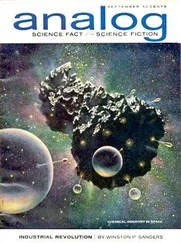Ludendorff’s third drive in the center of the line toward Paris in May was spectacularly successful at first, but once again the German troops ran ahead of their supplies. Their attacks were blunted at the tip with the help of fresh American troops thrown into melees at Belleau Wood and Château-Thierry. The Germans, at last poised for victory against the disintegrating French army, eagerly rushed their next assault without disguising their intentions particularly well. The still-formidable French artillery caught the German shock troops as they were forming up for their attack, and despite giving ground, prevented the Germans from breaking through.
That summer both armies were attacked by the Spanish influenza, killing thousands, but the hungry German army took the hit harder. Their morale started to crack, made worse by the growing presence of the corn-fed Americans. Ludendorff, still wishing to make one more diversionary thrust against the French before knocking out the British, cranked up his fifth assault on July 15. The French again learned of the hour of attack and scattered the Germans with a well-timed artillery barrage. The Germans, without tanks, were initially successful, but with American, Italian, and British support the French line held; a counterattack, with Americans and French colonial troops in the lead, hit the Germans in the flank. The Germans were forced to retreat, and the Allies, now building momentum, never slowed down.
Ludendorff, stressed by the failure of his last grand offensive, turned on the Kaiser in October 1918 and insisted that he negotiate peace, long after the Kaiser had come to the same conclusion. The Germans skillfully conducted a fighting retreat across their entire western front. Ludendorff quit at the end of October, and by the beginning of November the Kaiser had fled. The fledgling German republic, practically stillborn, signed the Armistice, ending the fighting on November 11, 1918.
A week after the end of the war-to-end-all-wars, things were starting to look up for the Allies in Siberia. On November 17, Admiral Kolchak took over the White Russian government in the landlocked Siberian city of Omsk and appointed himself Supreme Ruler of all the Russias. The Allies, casting about for a strongman to grab power from the Reds, took a liking to the Supreme Ruler and started feeding him supplies down the Trans-Siberian Railroad. While a ruthless reactionary, tsarishly untroubled about ordering the deaths of those who opposed him, the former head of the Russian Black Sea Fleet convinced the Allies he was an enlightened leader, and Wilson was ready to recognize him as the legitimate head of Russia. Despite losing the obvious rationale that had been conveniently provided by the war, the Allies remained stubbornly undeterred in their position — the noninvasion invasion must go on.
Graves pressed on, continuing his brilliant strategy of doing absolutely nothing amid the growing tumult of the Russian Civil War. The White armies, filled with Cossacks, made initial gains against the Bolsheviks. The Czech freelancers, unimpressed with Kolchak and realizing the writing was on the wall for anyone opposing the Bolsheviks, decided to finally take advantage of the fact that the war was over and just go home. Now they found themselves trapped in the growing chaos of the civil war.
In the spring of 1919, the Kolchak government gave its dubious stamp of approval to the Allies’s plan to run the decrepit Siberian railroads. Graves, happy to have his soldiers actually doing something that didn’t involve boozing and whoring in Vladivostok, moved his forces out of the city and took control of a section of the railroad in support of the Kolchak government. The American troops, however, quickly got into a confrontation with a local White Russian Cossack leader, Grigori Semenov, who was nominally part of Kolchak’s forces but was backed by the invasion-practicing Japanese. By this time, Graves had started to receive thousands of rifles meant for the Kolchak forces, but he refused to hand them over to Semenov because his wild Cossacks had been taking potshots at American troops (and anyone else who got in their way) whenever possible.
Semenov stopped a train of weapons bound for Kolchak in Omsk and demanded 15,000 rifles. After a two-day standoff, Semenov backed off and the train chugged on to Omsk. So, in this noninvasion invasion, designed to shorten a war that had already ended, the United States had confronted a friend of a friend that was backed by yet another friend, natch. This was just one of the many scenarios Graves faced in Siberia on which Wilson’s memo provided no guidance.
In July 1919 Graves was instructed by Washington to visit Kolchak in Omsk, as the American government and the Allies had the month earlier promised to provide his government with munitions and food. Graves arrived in Omsk after a long train ride through Siberia, past Lake Baikal, deep in the interior… in time for the collapse of Kolchak’s government. He came away unimpressed with the Land Admiral.
Kolchak, without support of the Czech legion and realizing that the bulk of his army was in fact an unruly gang of Cossacks, concluded that not all Russians felt he was Supreme Ruler material. In November he passed command of the Whites to the pesky Cossack Semenov. The dispirited Kolchak retreated east until captured by the opportunistic Czech legion. Sensing his barter value, the Czechs, in return for their safe passage out of Russia, turned him and his captured gold over to the crafty Reds. General Graves, now firmly in command of the port, bars, and restaurants of Vladivostok harbor, watched over the departure of the Czech soldiers as they finally shipped out home, more than a year after the end of World War I. There were no more cover stories. It was time to go. The American transport ships soon followed, loaded down with their war booty of eighty Russian wives of servicemen. The official figures put the American losses at 137 killed in action, with an additional 216 deaths from other sources, such as accidents and diseases.
The grabby Japanese stayed, still hoping to add a nice chunk of Russian tundra to their growing empire, but they eventually bowed to Bolshevik pressure and left in 1922.
In his book General Graves summed up his role in this amazingly stupid conflict with typical understatement: “I was in command of the United States troops sent to Siberia and, I must admit, I do not know what the United States was trying to accomplish by military intervention.”
One would expect that when two heavyweights such as the United States and Russia go at it, the world would indeed change. And perhaps that may be the most amazing aspect of this madcap affair. It changed absolutely nothing, except to give the world a few more Czech World War I veterans and provide the Bolsheviks propaganda they could use for the next eight decades: America was trying to invade us. No one in the United States remembers, but they do.
Woodrow Wilson suffered a stroke in 1919, and his wife became de facto president until the end of his term. During her time in charge she hid the ailing president from the vice president and the cabinet. She invaded no countries. Wilson died in 1924.
General William Graves retired from the army in 1928 and wrote a book damning the whole experience.
The Bolsheviks held Kolchak in prison for a few weeks and, as expected, placed him up against a wall and shot him on February 7. The gold found its way to the Bolsheviks in Moscow. On the bright side, a statue of Land Admiral Kolchak now stands in Omsk.
Vladimir Lenin suffered a series of debilitating strokes, starting in 1922, and died two years later. Josef Stalin took control of the Soviet Union and invaded many countries.
Читать дальше












